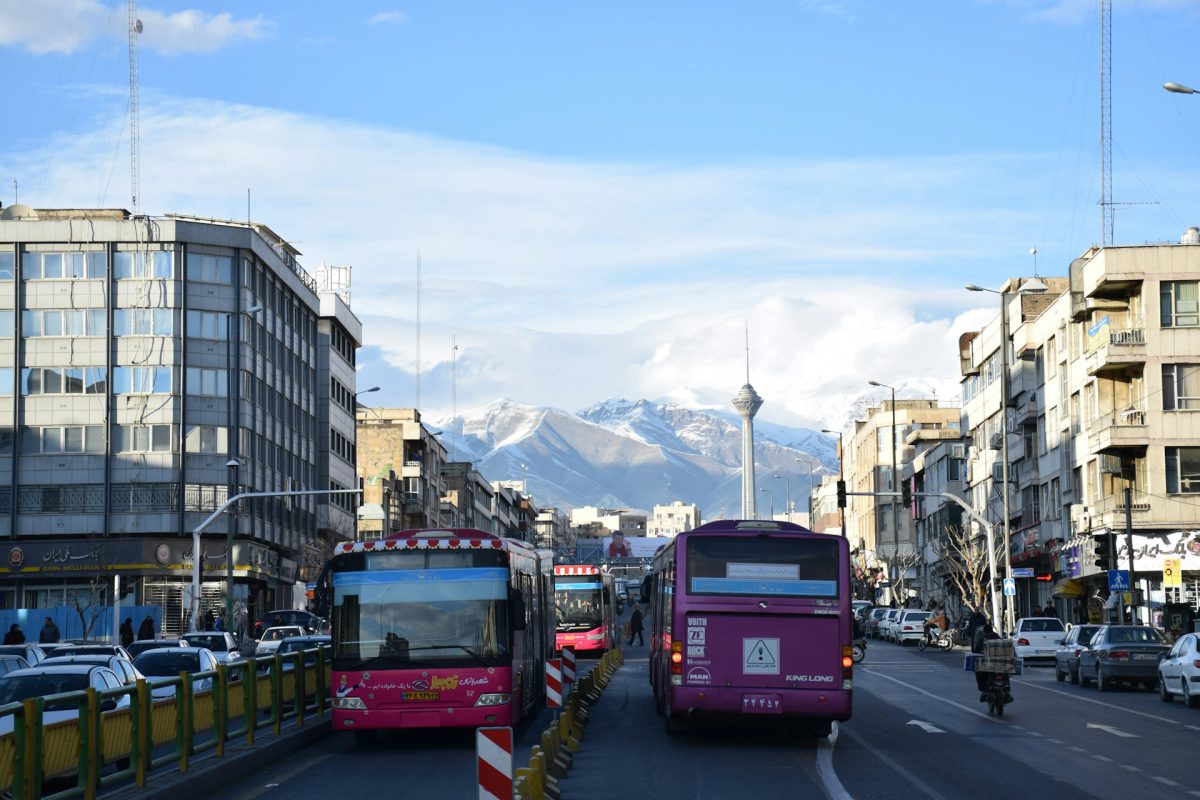Table of Contents
Transportation in Iran offers visitors a range of options to explore both within cities and across the vast country without spending too much money.
For traveling within cities, taxis are a handy option. Big cities have private taxis that can be flagged down on the street or reserved through apps like Snapp (Iran’s version of Uber), as well as shared taxis that follow set routes at lower prices. Bargaining for fares is common for private taxis, while shared taxis have fixed per-seat costs.
Public transportation in Iran like underground trains and buses provides an economical way to move around cities. Tehran‘s extensive underground train network spans multiple lines, efficiently connecting important areas and landmarks. The city’s Bus Rapid Transit (BRT) system offers dedicated lanes for faster travel around the clock. Other major cities like Isfahan and Shiraz also have reliable underground train and bus services.
Let’s explore public transportation in Iran together:
Transportation in Iran within Cities
Taxi
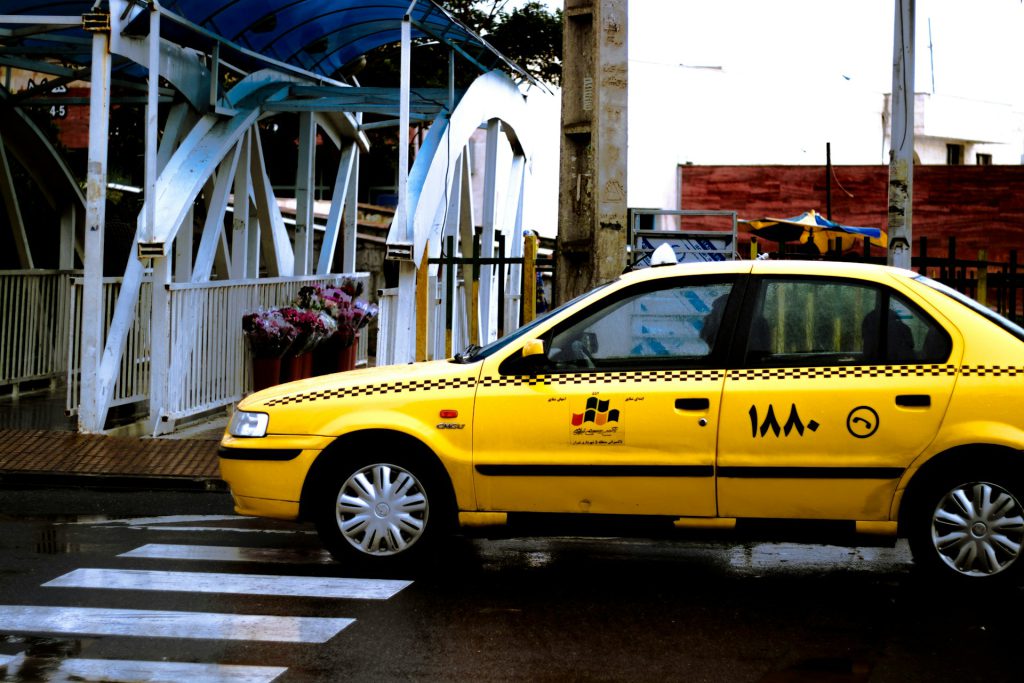
Iran transport provides many different kinds of taxi services, suitable for both locals and visitors. From the budget-friendly shared taxis to the easy-to-use online ride-requesting apps, getting around cities has become very straightforward.
Shared Taxis: For those looking for an economical and authentic way to travel through the busy streets, shared taxis, called “Savari,” are an excellent option. These taxis follow set routes along crowded roads, allowing passengers to get on and off at various stops. The fare is divided among all riders, making it an incredibly low-cost choice, especially for budget-conscious travelers or locals.
Private Taxis: If you prefer a more personalized experience, private taxis are readily accessible throughout Iran. These can be easily hailed at transportation hubs like airports, bus stations, and major hotels, with the ability to pre-book or hire on the spot. Alternatively, the iconic yellow or green “dar bast” taxis can be flagged down on the streets, offering a convenient way to get around at any time of day or night.
Online Taxi Applications: In the era of technology, transportation in Iran has embraced the convenience of online ride-hailing apps, similar to Uber. Two of the most popular platforms are Snapp and Tapsi, both offering user-friendly interfaces and supporting the English language.
Snapp, the pioneering Iran transport network company, connects riders with drivers through a simple mobile app. With its widespread availability across the country, ordering a taxi has never been more accessible. Tapsi, another well-known platform, offers distinct services.
To ensure a hassle-free taxi experience in Iran, consider the following tips:
Stay Connected: Obtain an Iranian SIM card to access the internet and order online taxis seamlessly, no matter where you are in the country.
Convenient Payments: For online taxi services, utilize Tourist Cards or secure payment links provided by reputable travel agencies, eliminating the need to carry large amounts of cash.
Flexible Travel: Take advantage of the pause and multi-stop options offered by apps like Snapp, allowing you to split your journey or make brief stops along the way.
Safety First: Tapsi’s Security Package enables you to share your driver’s information and travel route with loved ones, ensuring peace of mind throughout your journey.
With its diverse range of taxi services, Iran offers a seamless and enjoyable transportation experience for all travelers. Whether you prefer the affordability of shared taxis, the comfort of private rides, or the convenience of online platforms, exploring the country’s vibrant cities has become very straightforward.
City Bus
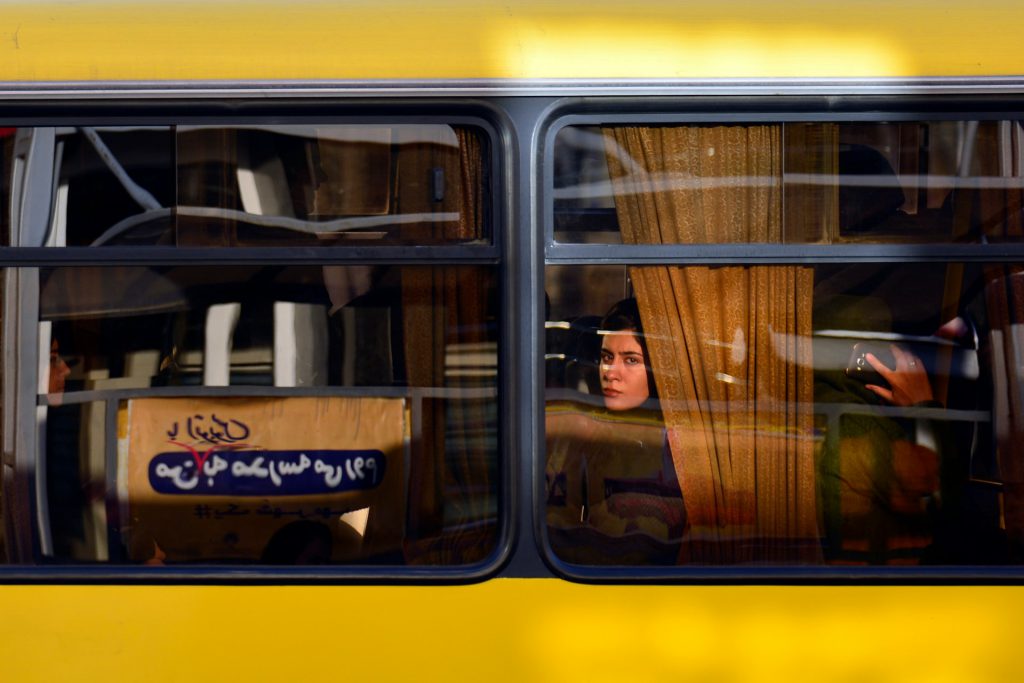
You can find city buses working in nearly all cities in Iran. Many people use them because they are the cheapest way to travel. While the bus numbers and where they go are written only in the Persian language, do not be afraid. Iranian people are friendly and you can easily ask someone on the street to help you find the right bus to take.
One thing that may seem strange to visitors is that women sit at the back of the bus and men sit at the front. This is done to make all the people on the bus feel comfortable. This way of sitting apart by gender may surprise you, but it is a custom in Iran.
In some bigger cities like Tehran and Shiraz, people have to use a special travel card to ride the bus. But since you are a visitor without this card, you can just pay a few cents in cash right to the bus driver. The cost is very low. By learning about these things, visitors can ride the city buses in Iran with confidence. It is a cheap and good way to travel around the cities and see the daily life.
BRT (Bus Rapid Transit)
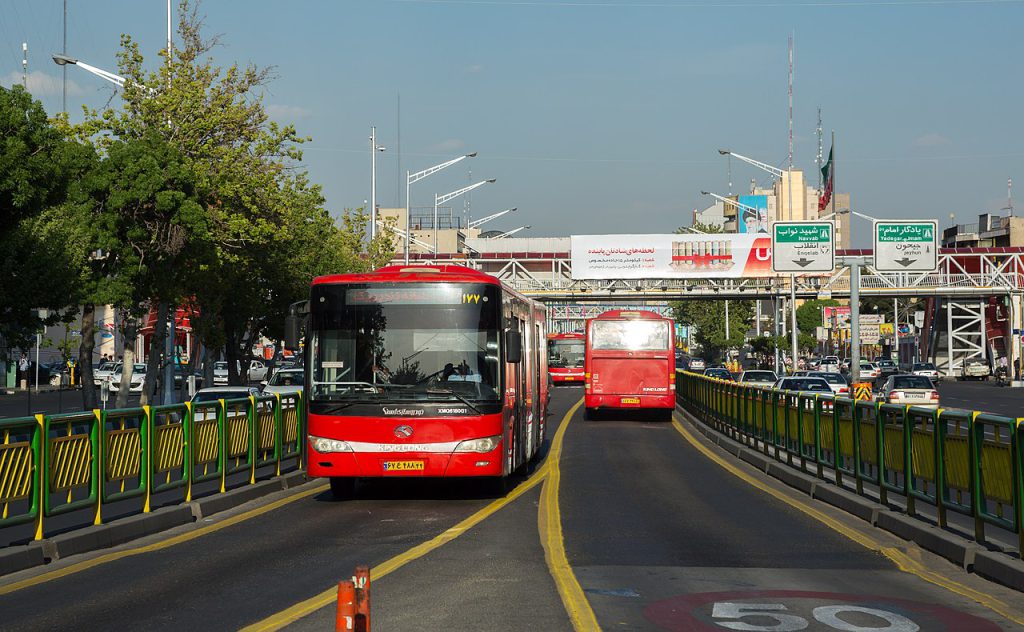
Tehran’s Bus Rapid Transit (BRT) system is truly one of the most suitable and speedy public transportation in Iran. It serves around 1.8 million travelers every day across its 10 routes that go through major areas of the capital. The BRT buses run on special lanes just for them, allowing for frequent service every 3-4 minutes.
The BRT system has its own separate road lanes, often built out of concrete to avoid too much wear and tear. This keeps the buses from getting stuck in regular traffic. The stations are made for easy access, with no stairs or other barriers. Travelers buy tickets at the stations, not on the buses, to help things move faster.
With a total network that is 100 kilometers long, Tehran’s BRT system offers a big coverage area and easy access to various parts of the city. Its routes connect major terminals and intersections, allowing efficient transportation for residents and visitors. One of the most useful routes is Line 7, which goes from the southern railway station all the way to Tajrish Square in the north, following Tehran’s longest street, Valiasr Avenue.
The BRT system is integrated with the city’s metro system, but it has some key advantages. It runs 24 hours a day, while the metro stops at 11 pm. It is also cheaper to use than the metro. The BRT can take you to some places that the metro does not yet reach, like certain tourist sites.
Payment is usually done at the entrance stations, where travelers can buy prepaid cards or metro cards to tap and pay for rides. If not, they need to pay the bus driver directly with cash when boarding. Having a prepaid card makes using pub;ic transportation in Tehran easier.
Metro (Subway)
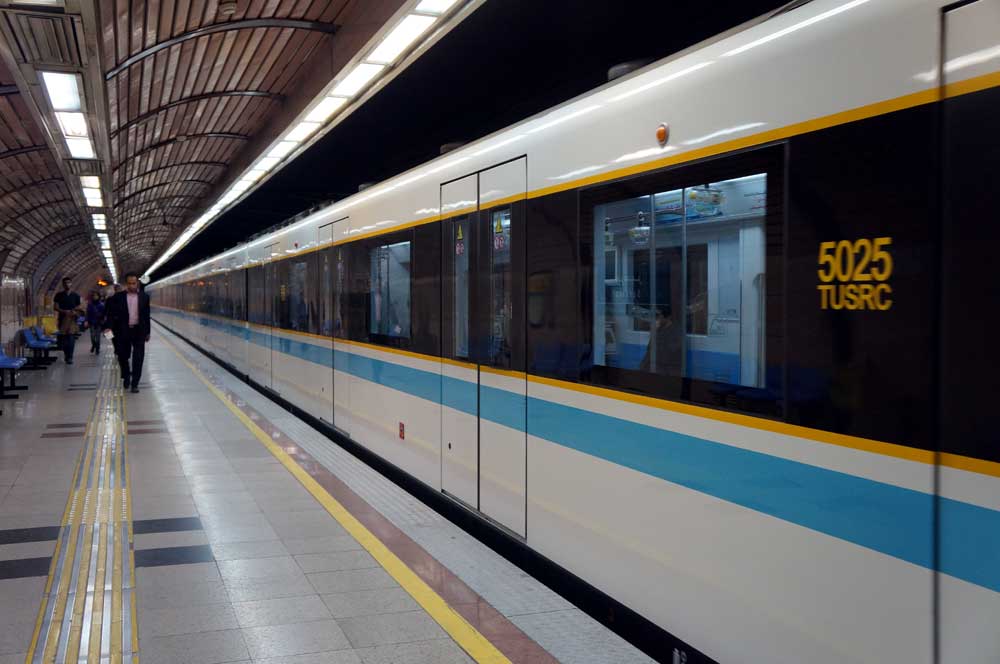
The Tehran Metro was the first city train system in Iran. It began working in 1999. Today, the Tehran Metro has 7 train lines that go for over 200 kilometers with 137 stations. More than 3 million people ride the Tehran Metro every day. The metro is a good way to travel that does not cost much money. The Tehran Metro helps reduce the number of cars on the roads in Tehran. This makes the city less crowded with traffic. While Tehran has the biggest city train system, some other big cities in Iran like Shiraz, Isfahan, Mashhad and Tabriz also have metro lines.
To use the Tehran Metro easily, it is better to buy a prepaid metro card. This way, you do not have to wait in a long line to get a ticket each time. The Tehran Metro runs from 5:30 AM until 11 PM at night. All the announcements on the trains are in the Persian language. Having a paper map of the metro lines or using the Tehran Metro smartphone app can help you find your way better. The maps inside the train cars may not show all the metro lines clearly.
The first and last train cars are reserved just for women riders, following Iranian cultural practice.
Transportation in Iran Between Cities
Buses
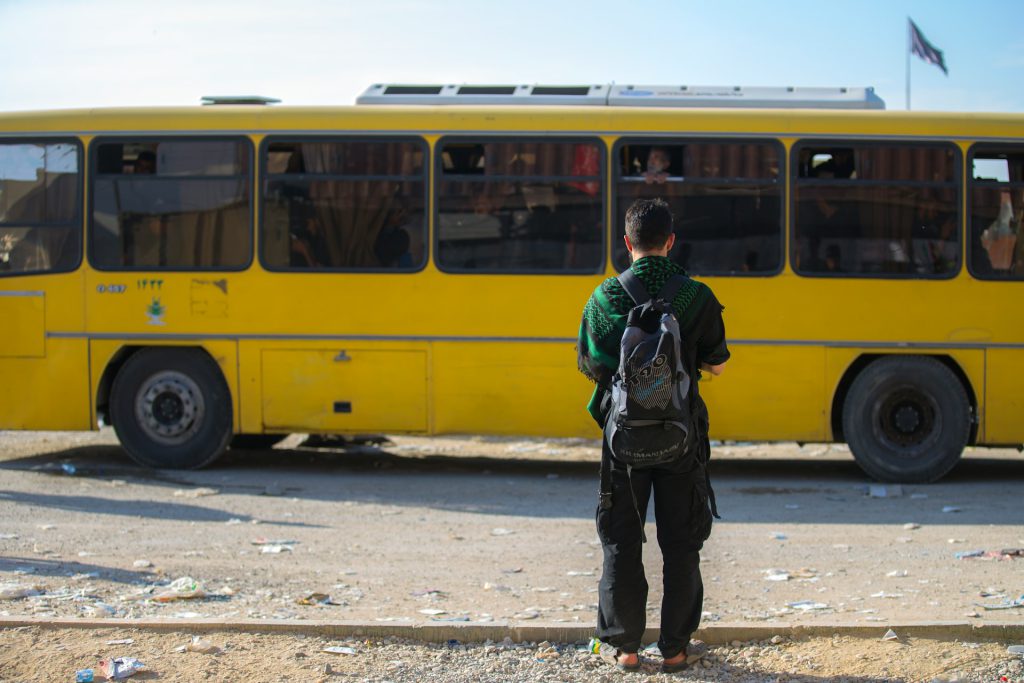
Among public transportation in Iran, using VIP buses is an inexpensive and pleasant choice for traveling between cities. These buses have big seats and things like snacks and drinks, making long trips more enjoyable. For overnight trips, some buses even change seats into beds for a good night’s sleep.
The big bus network connects all major cities, with buses leaving frequently all day. Tickets can be easily bought at bus stations without early booking for most routes. However, during holidays and weekends, it is better to book ahead to make sure you get a seat. Two good VIP bus companies are Hamsafar and Royal Safar.
Trains

Taking a train in Iran is a very special experience that people who love trains should definitely try to do. Iran railway system has a long history going back to the late 1800s. The first train line connected Tehran to the nearby town of Rey. Over the years, the railway system grew bigger. One very important project was the Trans-Iranian Railway, which was finished in 1938. This project involved a lot of difficult engineering work to build train tracks over rough land and steep routes. This historic Trans-Iranian railway line was recently named a UNESCO World Heritage Site, which shows how important it is culturally.
Even though the railway system in Iran is not as widespread as some might expect, several major cities are connected by train services. From Tehran, the capital city, travelers can take trains to places like Tabriz in the northwest, the famous city of Esfahan, the holy city of Mashhad in the northeast, the southern port city of Bandar Abbas, and the desert city of Kerman. Taking a train in Iran is an experience to enjoy and remember. Iranian trains offer comfortable seating options, including sleeper compartments for overnight travel, which allows passengers to save money on accommodation while having more time for sightseeing.
Many trains are run by private companies, so the level of service and amenities can vary from basic to luxurious options like the well-known Fadak 5-star train, which is often called a “mobile 5-star hotel.”
Air Transportation
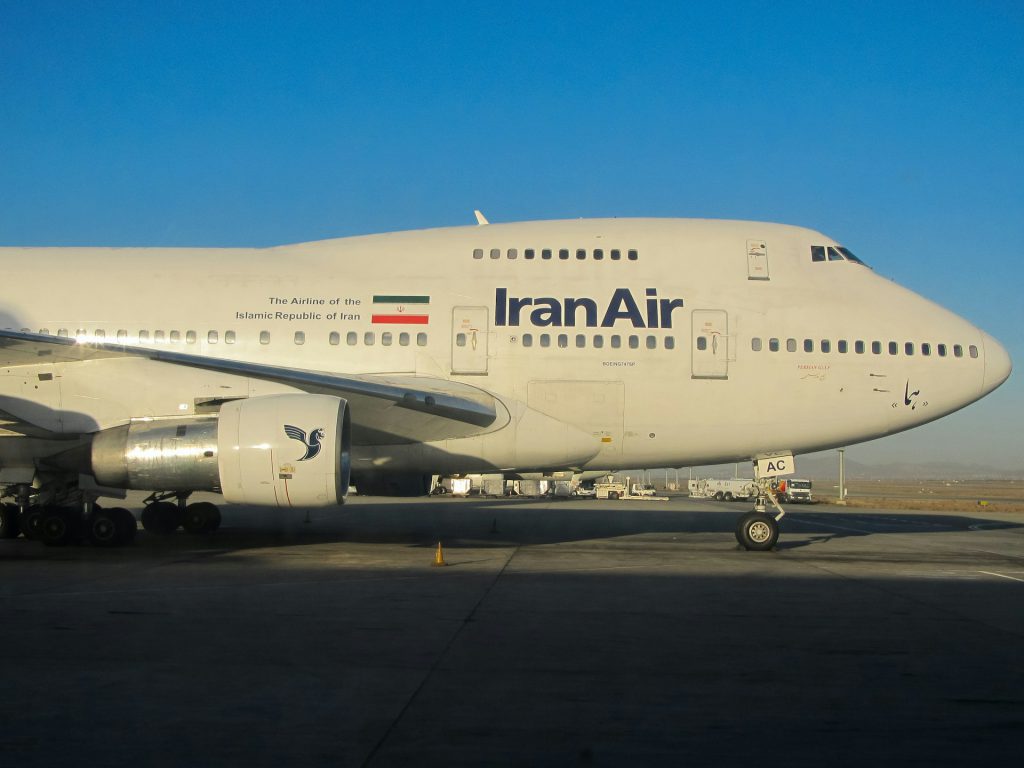
Air travel is one of the fastest and most simple ways to get around in Iran. A one-hour flight can cover a distance that would take up to 15 hours by bus or train. The country has a big network of flights between cities inside Iran.
Tehran, the capital city, is the main place for air travel with two major airports – Mehrabad National Airport (the old international airport) and Imam Khomeini International Airport (IKIA). These airports handle both flights inside Iran and flights from other countries, making Tehran the main entry point for visitors.
Iran Air, the national airline of Iran started in 1962, has a big network of flights inside Iran as well as flights to other countries. Other major Iranian airlines that offer flights between cities in Iran include Mahan Air, Kish Air, Qeshm Air, Iran Aseman Airlines, Meraj Airlines, and Taban Airlines.
The busiest routes for flights inside Iran connect Tehran with cities like Shiraz, Mashhad, Isfahan, Tabriz, Yazd, Kerman, Kish Island, and Qeshm Island. These places are popular with tourists because of their rich culture, historical sites, and natural beauty.
Flights from Tehran to Shiraz, Mashhad, and Kish Island are among the most frequently used routes, serving both tourists and business travelers. Flights also connect other major cities inside Iran, such as Mashhad to Isfahan, and Shiraz to Mashhad, providing easy air travel across the country.
Car Rent in Iran
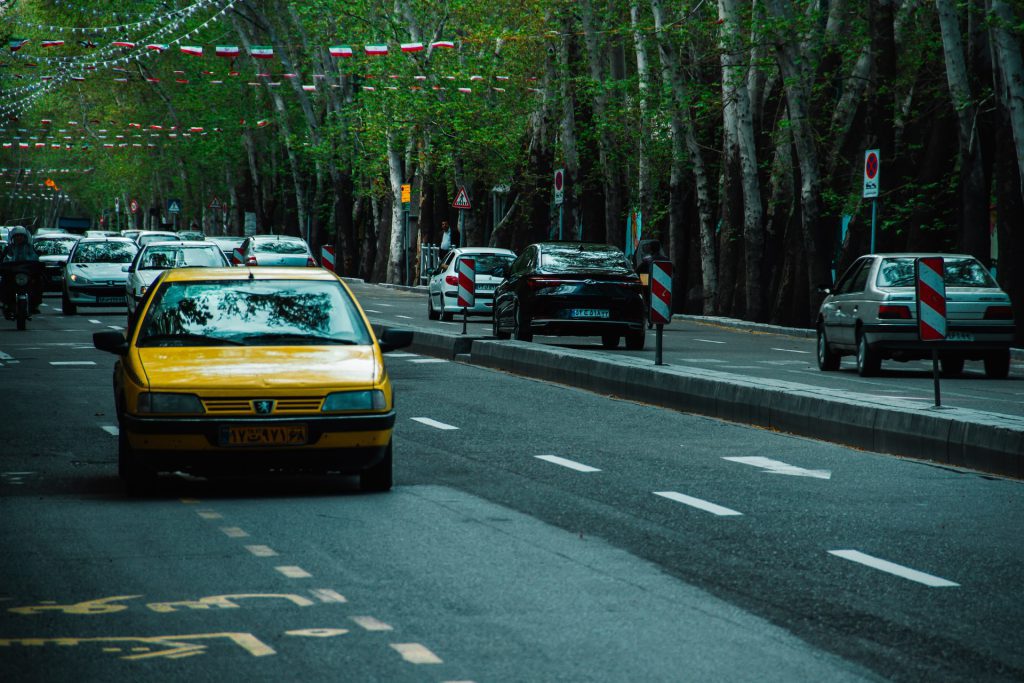
Hiring a car with a driver in Iran is a handy and popular choice for travelers who want to see Iran history and culture. With a skilled driver behind the wheel, you can sit back, unwind, and enjoy the beautiful routes without the worry of finding your way on unfamiliar roads or dealing with local traffic rules.
One of the main benefits of renting a car with a driver is the increased safety and comfort it provides. Professional drivers know local driving customs and regulations well, ensuring a smooth and stress-free journey. Additionally, trustworthy rental companies offer well-kept vehicles, guaranteeing a comfortable and dependable mode of transportation.
Renting a car with a driver is particularly helpful for business travelers attending conferences or events in Iran. Punctuality and comfort are guaranteed, allowing you to focus on your agenda without worrying about transportation logistics.
For solo travelers, especially women, renting a car with a driver can provide an extra layer of security and peace of mind while exploring Iran independently.
When renting a car with a driver in Iran, it’s crucial to choose a trustworthy rental company that offers clear pricing and reliable services. Companies like Saadat Rent and Sweech Rent have established good reputations and offer a wide range of vehicles to suit different travel needs.
By considering your travel needs and doing proper research, you can ensure a smooth and memorable journey through Iran’s captivating landscapes.
FAQs about Transportation in Iran
Q1: How do people get around in Iran?
A1: Taking the metro is usually the best way to avoid traffic jams. Metro systems are found in the Iranian cities of Tehran, Mashhad, Shiraz, Esfahan, and Tabriz. In Tehran, you can buy one-way tickets and refillable transport cards at metro stations.
Q2: How much does transportation cost in Iran?
A2: In each city, you can use taxis, public buses, or ride-hailing services like Snapp or Tap30. Taxis in Iran are quite cheap, with short rides usually costing around $1 to $2. Public buses are even cheaper, with fares typically less than $0.50 per ride.
Q3: What is the transportation infrastructure of Iran?
A3: The country has a large road network, efficient railways, and major ports like Bandar Abbas and Shahid Rajaee Port that support sea trade. Tehran’s airports, especially Imam Khomeini International Airport, are important hubs for air cargo.
Q4: Does Tehran have public transport?
A4: Tehran has a good metro system, which is the best way to avoid heavy traffic. You can get a metro card at the stations, which can also be used for buses and official taxis. While there are many buses in the city, they can be slow and poorly organized.
Q5: What is the most popular transportation in Iran?
A5: Buses are the most common public transportation in Iran and are available in both cities and rural areas. They are reliable and comfortable, often with air conditioning and sometimes Wi-Fi. Trains are also popular for longer trips, providing scenic views and comfortable seating.
Last Words: Discover the Best of Transportation in Iran with a Customized Tour
Transportation in Iran offers various affordable options for exploring cities and the country. In cities, taxis are convenient. You can either flag down private taxis or book them through apps like Snapp (similar to Uber). There are also shared taxis with set routes and cheaper fares. For private taxis, you can often negotiate the fare, but shared taxis have fixed prices per seat.
If you want to travel and enjoy the best transportation in Iran, a Customized Tour is the way to go. To Iran Tour offers Iran Tours and Travel Packages that match your interests. Our expert tours are designed to show you the best of Iran’s culture, history, and scenery. We take care of everything, including transportation, so you can relax and enjoy your trip.
Let us guide you through an amazing adventure in Iran, tailored just for you.

